Summary | Key concept | Science Story | Background Science | Activity | Curriculum links | Linked Activities
Download this activity as Word or PDF – click on the links above
There is also an associated Moon Phases chart available as a webpage, a Word document, a PDF document, or a PNG image.
- Suggested Age Range: 4 – 5 years; 5 – 6 years
- UK Primary Curriculum: EYFS (Reception); Key Stage One
- Suggested UK Year Group: EYFS (Reception); Year 1
- UK EYFS Curriculum Link: Understanding the World
- UK Primary Curriculum Link: Everyday Materials
- Science Subject: The Moon; Sun, Moon and Earth
- Science Question: What shape is the Moon?
- Activity type: individual
- Suggested linked stories: Travelling to the Moon; A Ladder to the Moon; The Woman in the Moon
Brief summary: The Moon is our nearest neighbour in the Solar System. While the Moon is shaped like a ball, that is not how we always see it in the sky. The Moon changes shape over a month. Sometimes it looks like a circle, sometimes it looks other shapes. This activity helps children recognise and name the phases of the Moon.
Key concept: The Moon is shaped like a ball, but it looks like it changes shape over time.
Key words: light, shadow, Moon phase, Full Moon, Half Moon, Crescent Moon, New Moon
Visuals:
- Below are links to a Moon Phases chart showing the main phases of the Moon. This can be used with the Science Story to introduce the different phases of the Moon. You can find this chart as a webpage, a Word document, a PDF document, and a PNG graphic.
- Animation of the Moon changing shape from New Moon to Full Moon and back again, covering the 29 days of the lunar cycle.
- See also images of various lunar features from the Lunar Planetary Institute.
The Science Story:
What do we see when we look up at night?
We see stars, the Moon, planets, clouds, as well as aeroplanes and satellites. The Moon is the brightest thing in the sky at night.
Have you heard of the Man in the Moon?
When some people look at the Moon, they see a picture of a man’s face in the Moon.
Have you ever seen the Man in the Moon? (Here you can show a picture of the Full Moon, see below.)
Not everyone sees a man’s face when they look at the Moon. Some people see a rabbit instead!
Can you see a rabbit when you look at the Moon? Can you see any other animals in the patterns on the Moon? (Let the students show the class what animals they can see.)
What shape is the Moon?
Sometimes the Moon looks round, sometimes it looks like a banana, sometimes it disappears completely! These shapes are called phases.
(Here you can do the phases demo using Oreo cookies or similar – see below.)
Oreo demo: This is an optional demonstration to illustrate the phases of the Moon in a tasty way. Use Oreo cookies, or similar round cookies with cream in the middle. You can demonstrate this yourself, but it is more fun to hand out cookies to the class so that everyone can have a go. The associated video of lunar phases and/or the Moon Phases chart (webpage, Word document, PDF document, PNG graphic.) may be useful.
- Hold up a cookie – this is the Moon.
- Twist off the top half of the cookie so that you can see the cream. The cream is the Full Moon.
- Explain that when the Moon looks like a circle, we call it a Full Moon.
- Use your teeth to nibble at the edge of the cream a bit at a time.
- Explain that the Moon appears to change shape over time. Sometimes it looks Full, sometimes it looks like half a Moon, sometimes it looks like a banana, and sometimes it looks invisible.
- When you have eaten all the cream, this is a New Moon.
Here is a longer version of this activity where the students can work together to produce a chart showing phases of the Moon: https://www.superteacherworksheets.com/blog/oreo-moon-phases
The Science: The Moon is a small rocky body, with a solid surface like the Earth. Unlike the Sun and the stars, the Moon emits no light of its own, we only see it because it reflects the light of the Sun. To us, the Moon appears to change shape over a month (the word “month” is in fact derived from the word “moon”). Like the Earth experiencing day and night, only half of the Moon is ever illuminated by the Sun (“lunar day”), the other side is experiencing “lunar night”. The Earth spins once on its axis every 24 hours, so one Earth-day is 24 hours long. The Moon also spins on its axis, but it spins much more slowly than the Earth, in fact it takes 29.5 days to spin once on its axis. This means that lunar-daytime lasts for about two weeks, and lunar-night-time on the Moon also lasts about two weeks. One full lunar day lasts almost four Earth weeks!
The Moon is also in orbit around the Earth, in the same way that the Earth is in orbit around the Sun. The big difference is that it takes one year (365.25 days) for the Earth to complete one orbit of the Sun, while it takes the Moon 29.5 days to complete one orbit of the Earth. Because the Moon takes the same time to complete one orbit of the Earth as it takes for the Moon to spin once on its own axis, we only ever see one side of the Moon.
Sometimes when the Moon is close to being a New Moon and there is only a thin crescent visible, if you look carefully you will notice that the rest of the Moon is faintly visible. This effect is called “Earthshine” and happens because the Moon is also reflecting light from the Earth. If you imagine being on the surface of the Moon when it is close to New Moon and looking down at the Earth – you would see an almost completely-illuminated Earth. Earthshine is the result of light from the Sun reflecting off the Earth, and then being reflected back to us by the Moon’s dark half.
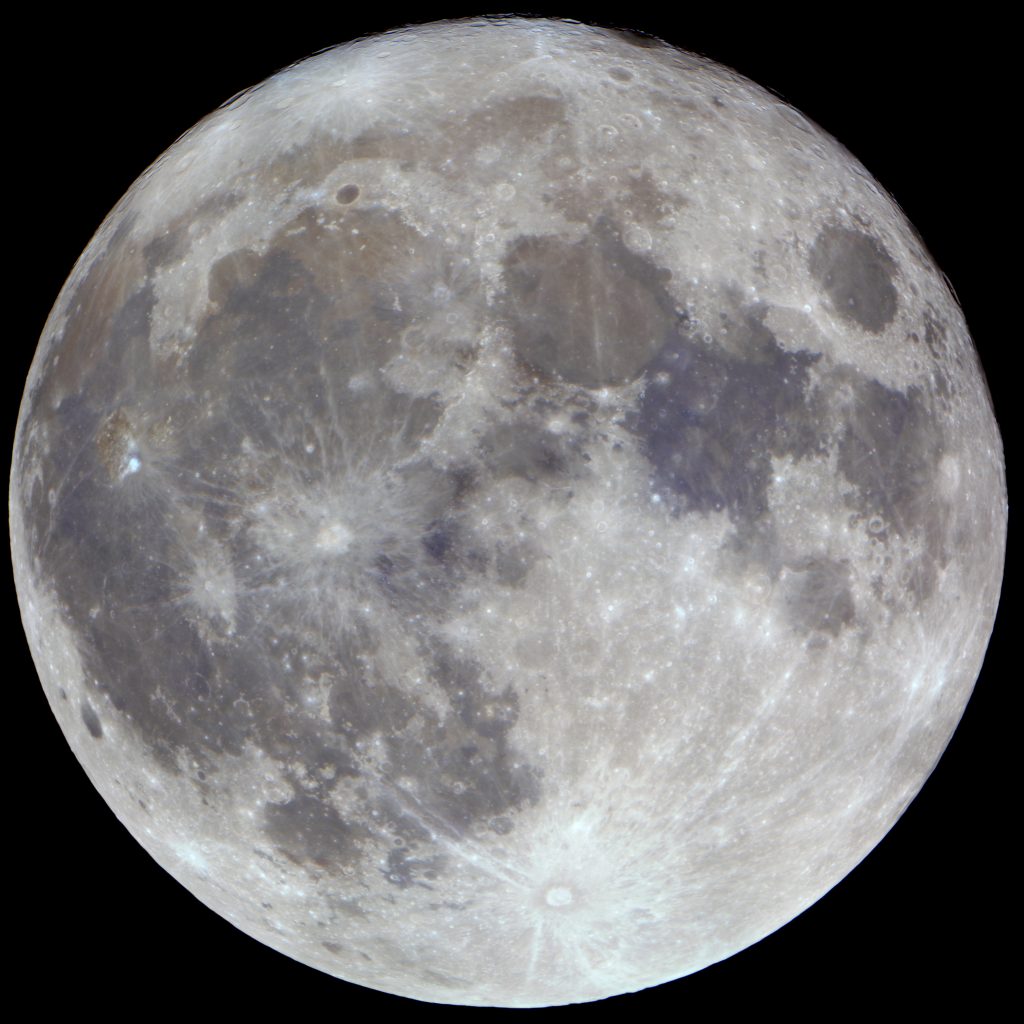
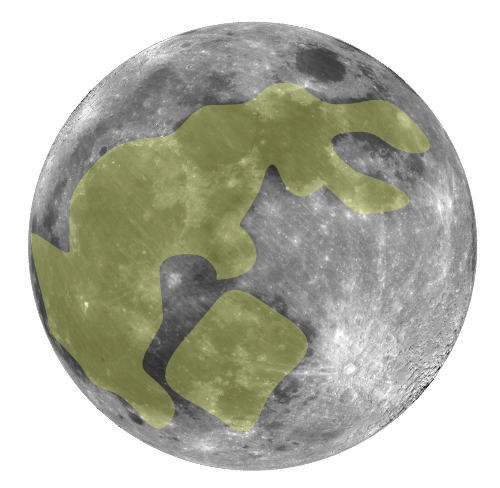
By Zeimusu, CC BY-SA 3.0, https://commons.wikimedia.org/w/index.php?curid=427426
The activity: In this activity, the students will make their own hats to show phases of the Moon. They may choose to make their hat a particular phase of the Moon, or they could decorate their plate using a character from a Moon tale that they have heard (see related stories, above).
Props required:
- Paper plates
- Thin card, cut into strips about 10cm wide and ~40cm long
- Elastic, cut into strips about 15cm long
- Scissors
- Tape
- Pens, crayons, colouring pencils or paints.
Safety note: Care needs to be taken when using scissors. Additional adult supervision is recommended.
Safety note: When stapling together the head bands, take care that the sharp ends of the staples end up between the two halves of the cardboard.
- You are going to make a Moon hat to wear! Collect a paper plate – this will become your Moon.
- Look at the Moon phases chart and decide what shape you would like your Moon to be.
- Draw the shape you chose on to your plate.
- Carefully cut your plate to the shape you want. Ask an adult for help if you need it!
- Decorate your Moon. You can make it look like the real Moon, or you can draw the Man in the Moon, or another character from a Moon story that you have heard.
- Take a strip of card – this is your headband.
- Put the bottom of your Moon in the middle of your headband.
- Ask an adult to staple the hat together for you. (Staple a piece of elastic to either end of the headband so that it fits the child’s head.)
- Put the hat on your head and show your friends how creative you are!
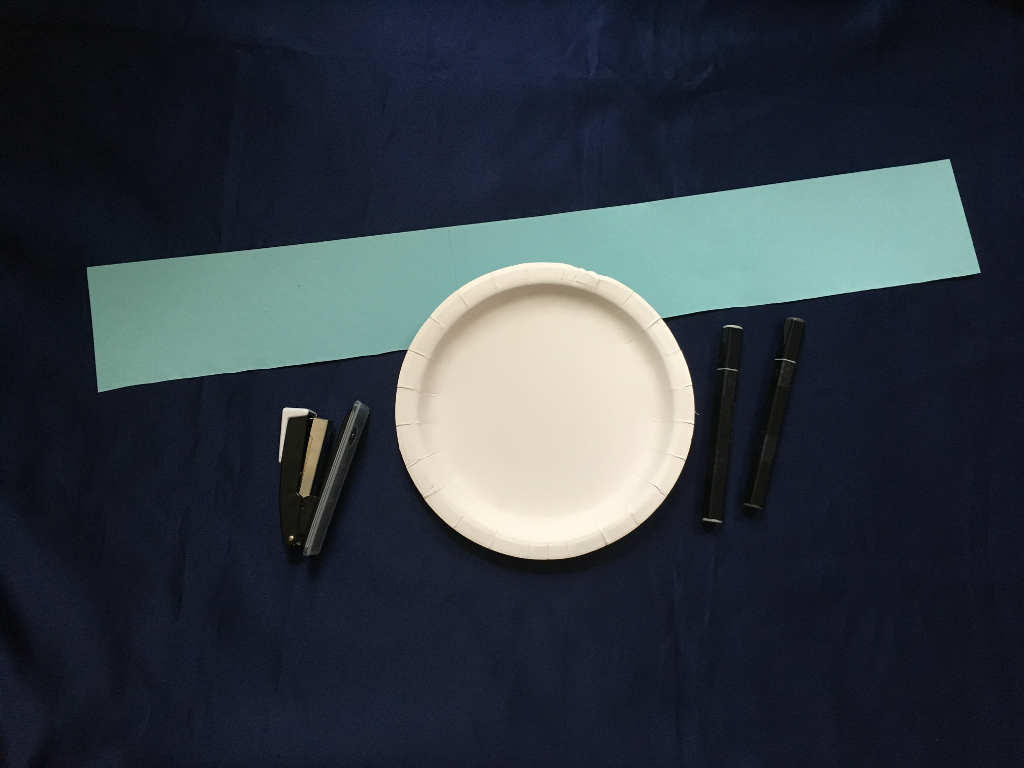
Step 1: collect a paper plate 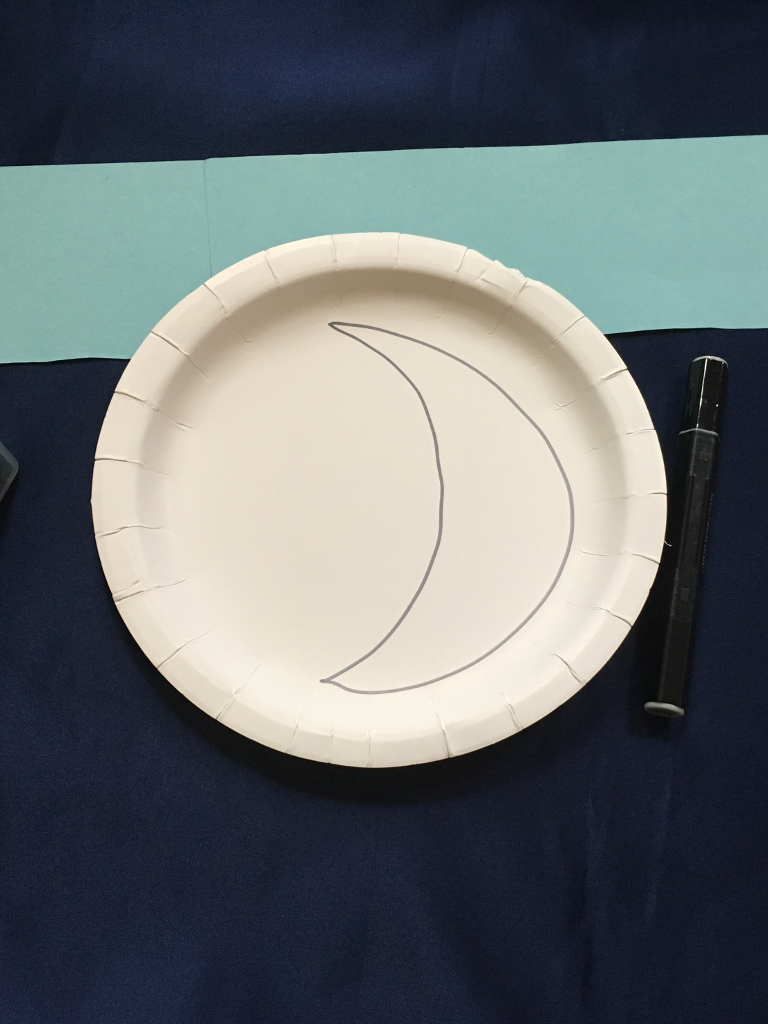
Step 3: draw your Moon shape 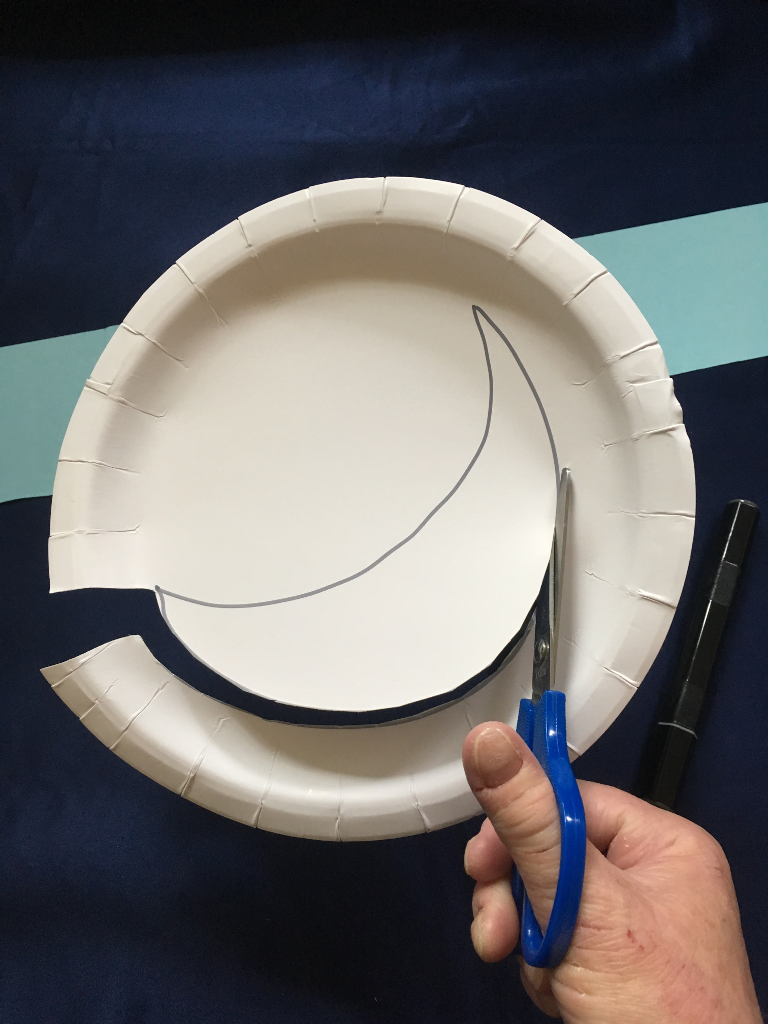
Step 4: cut out the Moon shape 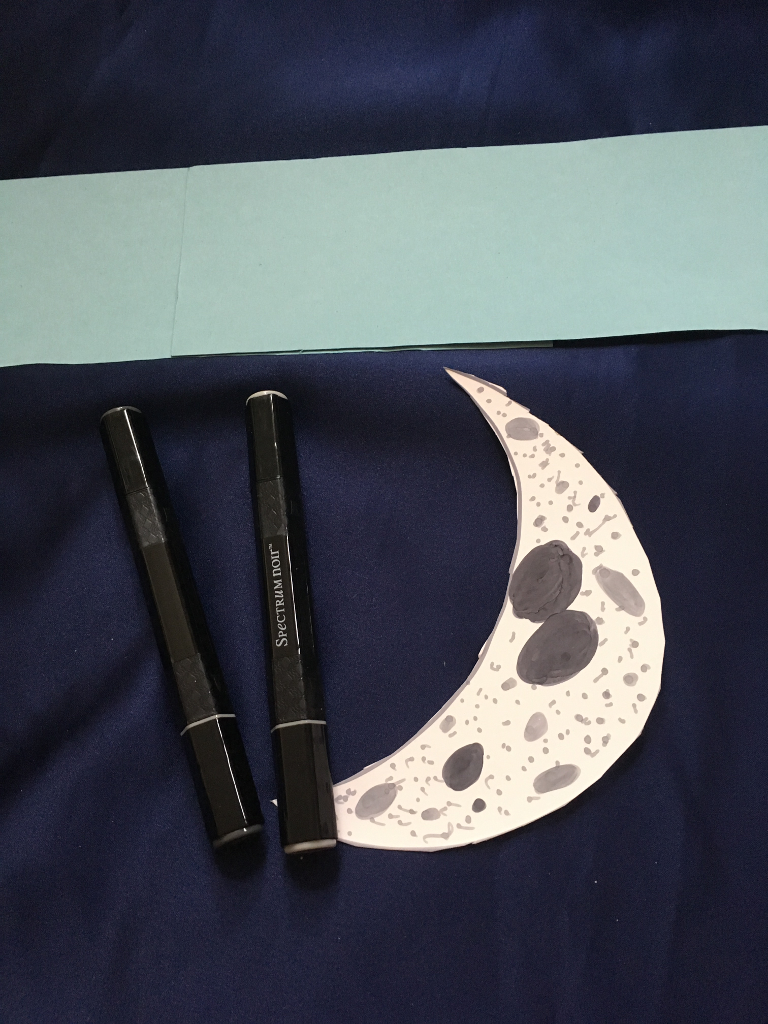
Step 5: decorate your Moon 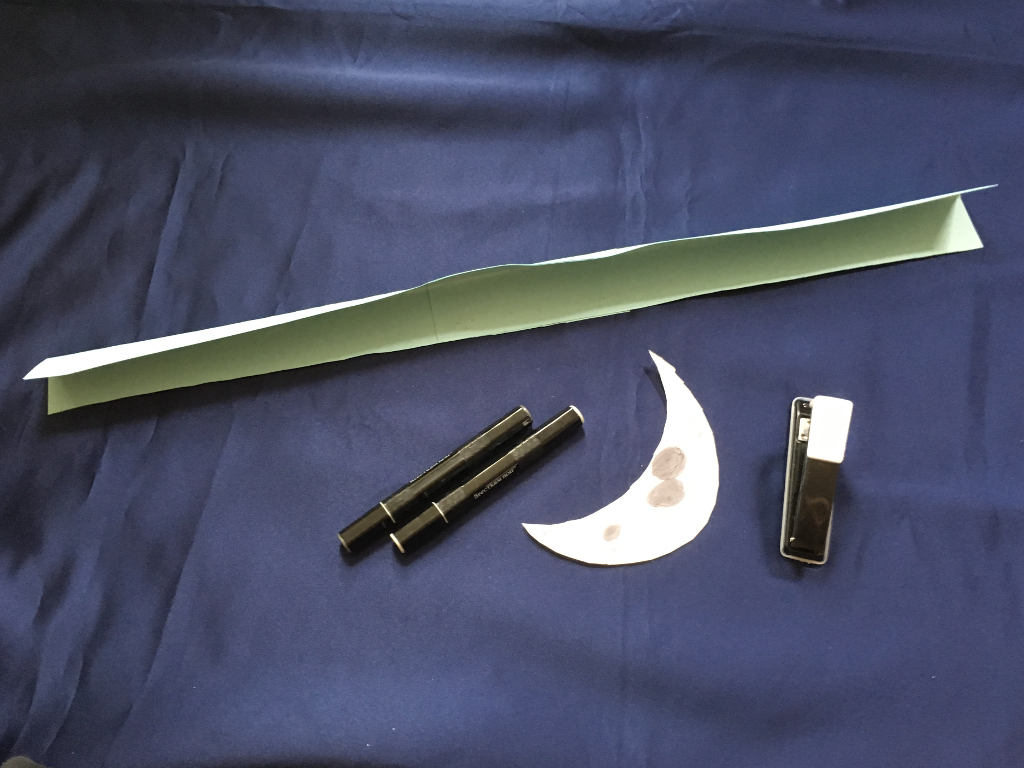
Step 6: Fold your cardboard strip 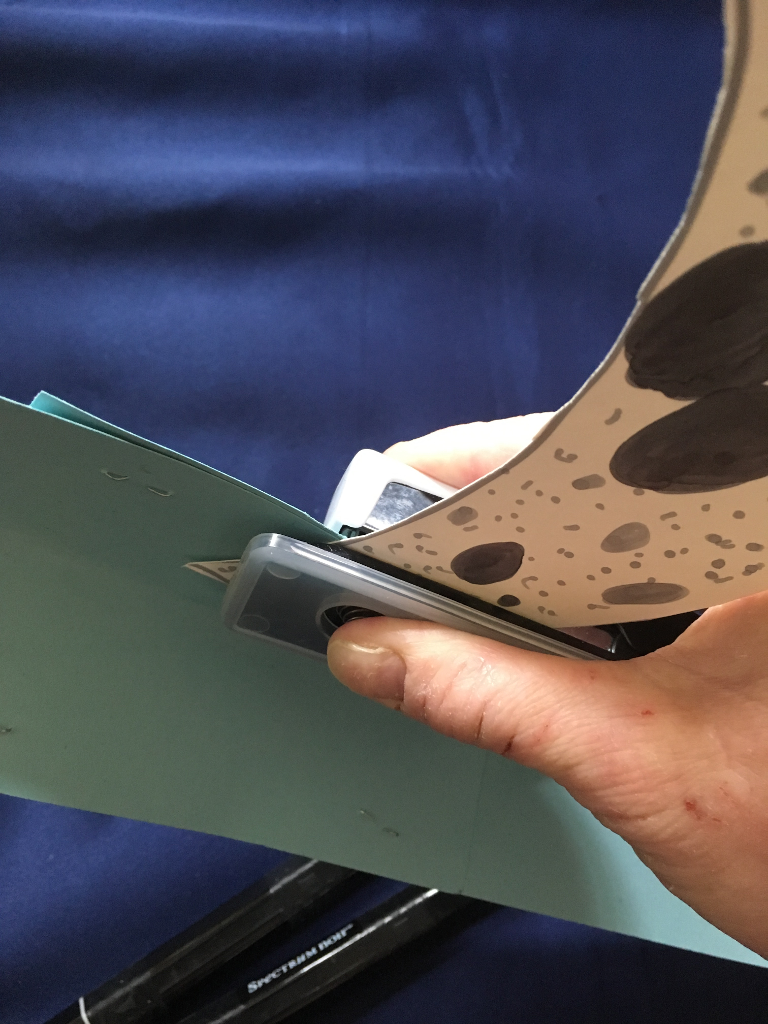
Step 7: Staple the Moon to the cardboard strip 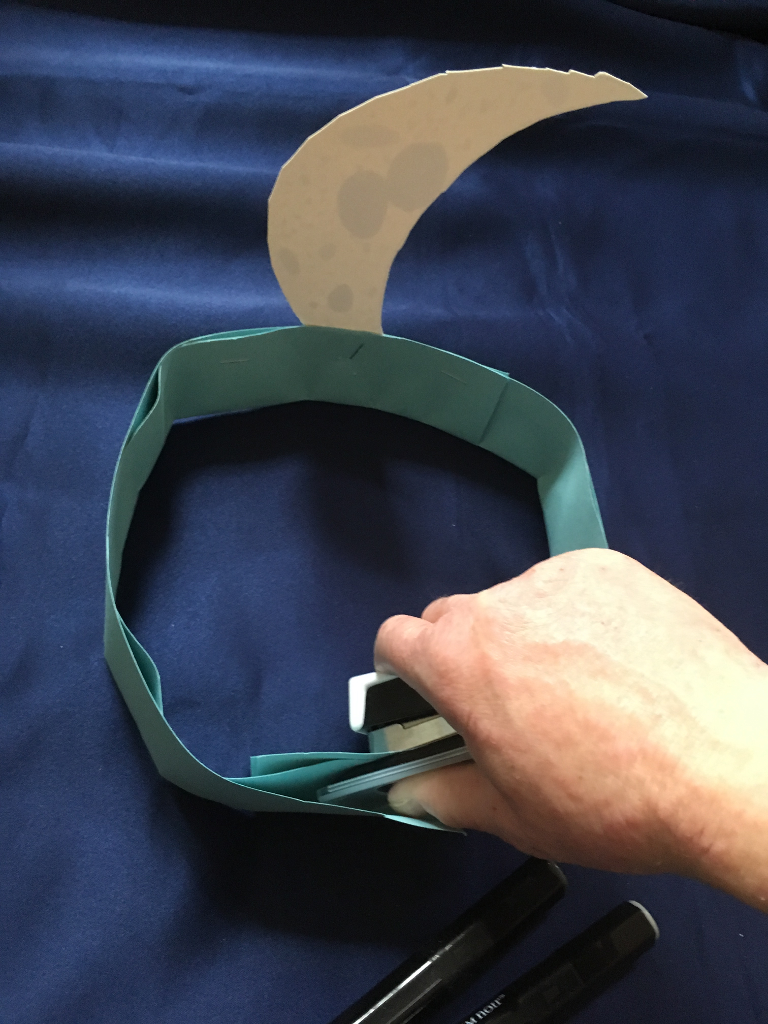
Step 8: Staple the hat together 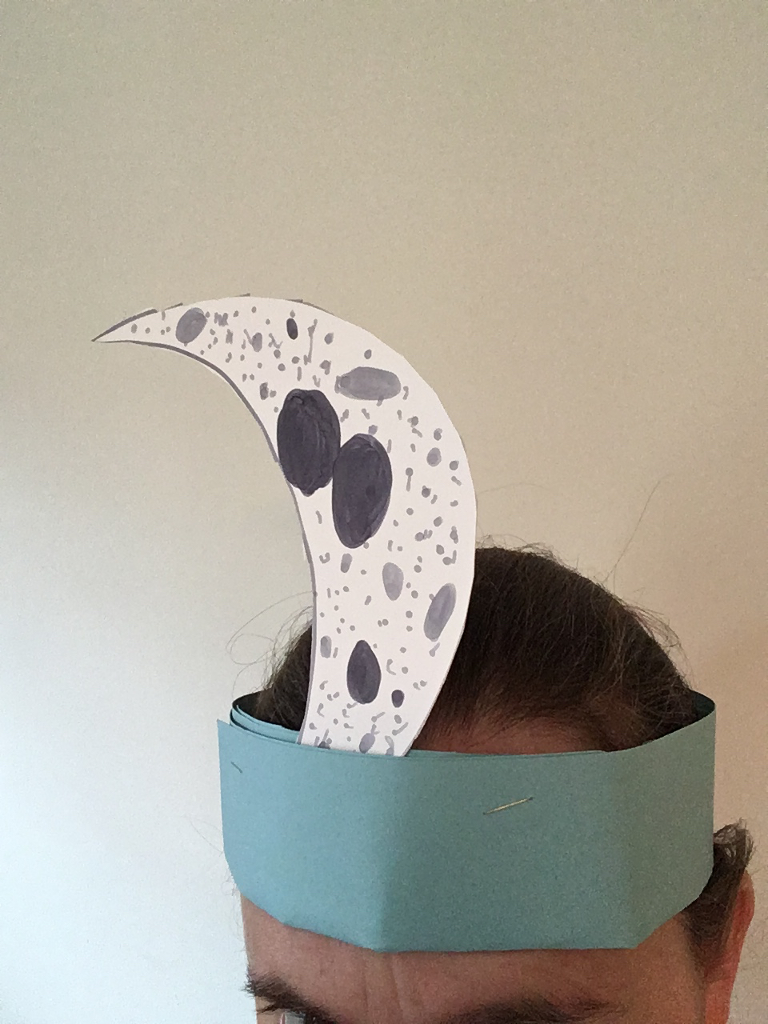
Step 9: Wear your hat!
Extension: This is a little more difficult to organise and works better with older groups, but it is possible to make a Moon phase timeline. Use the phases chart and give each table of students a different phase to make. Once the hats are complete, tell the students to put them on, and then arrange them into a line to show how the Moon changes shape over the course of a month.
Common misconceptions:
- The Moon is only in the sky at night – the Moon is most noticeable at night because it is so much brighter than the stars, but in fact it can be up during the day as well. You could use the free planetarium package Stellarium (https://stellarium-web.org) to find out when the Moon will be visible and what shape it will be.
Curriculum links:
- Understanding the world EYFS– making sense of the physical world, exploring, observing.
- Science KS1 everyday materials– what shape is the Moon, and what is it made of?
- Subject Oracy – introducing the names of the different phases of the Moon, understanding the concept of “phase”.
Copyright: Megan Argo 2019





